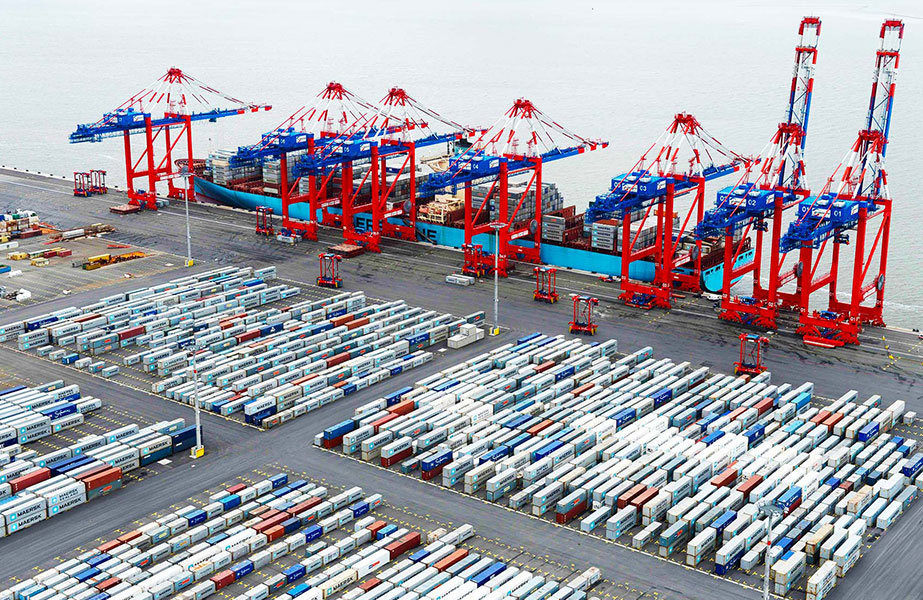The slowdown in containers markets is likely to end soon and volumes are expected to rise in the coming months the CEO of Adani Ports and Special Economic Zone Limited (APSEZ) , Karan Adani, told S&P Global Pl
“In July, with the unlocking of the country, we saw a surge of 30% from month on month in terms of the total volumes and when you see that year on year, we saw a 6% growth,” Adani said in response to a question from Platts. “What we see is that the worst is behind us and we would only see a continuing upswing trend going forward.”
The shortfall in container availability caused due to dip in imports is likely to normalize in the next two months and India would be in a balanced trade again, he said.
For the first time in 18 years, India reported a trade surplus in the month of June with the imports falling by 47.6% on year while exports dipped by 12.4% on year.
This had led to an acute shortage of containers at major ports across the country.
Container volumes at Adani’s Mundra port, Gujarat, fell 18% on the year to 14.2 million mt in April-June, the company said. Meanwhile, share of container volumes at Mundra port rose to 55% of total cargo volumes in the quarter, from 47% a year earlier.
Adani’s Mundra port surpassed Jawaharlal Nehru Port Trust in Mumbai to become India’s largest container handling port, the company said. Mundra handled 970,000 twenty-foot-equivalent, or TEU, in April-June, compared with 850,000 handled by JNPT.
APSEZ handled 1.23 million TEU of container traffic in April-June against 3.22 million TEU handled at the national level.
The company has 11 ports and terminals in India, namely Mundra, Dahej, Kandla and Hazira in Gujarat, Dhamra in Odisha, Mormugao in Goa, Visakhapatnam in Andhra Pradesh, and Kattupalli and Ennore in Chennai and is developing a transshipment port at Vizhinjam, Kerala and a container terminal in Myanmar.
atts Aug. 11 during the company’s first fiscal quarter earnings call with analysts.
“In July, with the unlocking of the country, we saw a surge of 30% from month on month in terms of the total volumes and when you see that year on year, we saw a 6% growth,” Karan Adani said while responding to a question posed by Platts. “What we see is that the worst is behind us and we would only see a continuing upswing trend going forward.”
The shortfall in container availability caused due to dip in imports is likely to normalize in next two months and India would be in a balanced trade again, according to the CEO.
For the first time in 18 years, India reported a trade surplus in the month of June with the imports falling by 47.6% on year while exports dipped by 12.4% on year.
This had led to an acute shortage of containers at major ports across the country.
Container volumes at Adani’s Mundra port, Gujarat, fell 18% on the year to 14.2 million metric ton, or MMT, in April-June quarter of 2020, the company said. Meanwhile, share of container volumes at Mundra port rose to 55% of total cargo volumes in April-June quarter, from 47% a year ago.
Adani’s Mundra port surpassed Jawaharlal Nehru Port Trust (JNPT) in Mumbai to become India’s largest container handling port, the company said. Mundra port handled 0.97 million twenty-foot-equivalent, or TEU, during the April-June quarter, compared to 0.85 million TEU handled by JNPT.
APSEZ handled 1.23 million TEU of container traffic in April-June quarter, against 3.22 million TEU handled at all India level.
The company has 11 ports and terminals in India, namely Mundra, Dahej, Kandla and Hazira in Gujarat, Dhamra in Odisha, Mormugao in Goa, Visakhapatnam in Andhra Pradesh, and Kattupalli and Ennore in Chennai and is developing a transshipment port at Vizhinjam, Kerala and a container terminal at Myanmar.
Source:- Hellenic Shipping News






